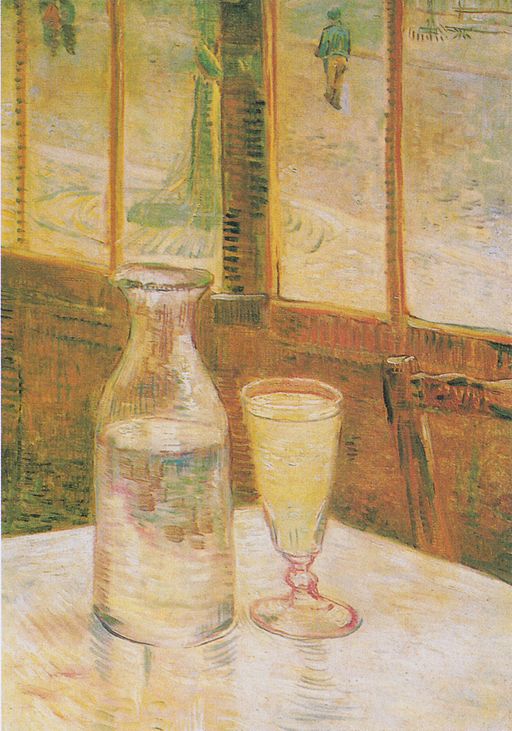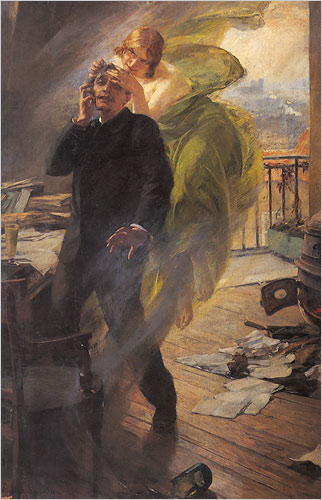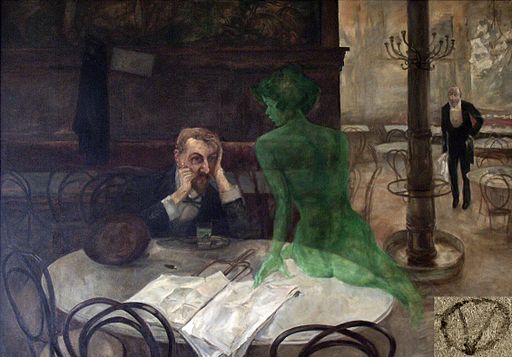
Van Gogh, Still Life with Absinthe
Fans of Ernest Hemingway know that a lot of absinthe gets drunk in his novels. Absinthe was a strong alcoholic drink made from an aromatic, bitter-tasting herb called Artemisia absinthium, or wormwood. Its characteristic licorice flavor was derived from fennel and anise, and it smelled like a Christmas tree. In its pure form it was a clear liquid, but became milky when diluted with water or wine.
This article in the New York Times explains why the drink turns milky when diluted: “[T]he key constituent of wormwood is a chemical called thujone, which gives it — and absinthe — a penetrating evergreen aroma. . . . The aromatics are more soluble in alcohol than in water, so when the concentrated spirit is cut with wine or water, they cluster together in tiny droplets that reflect light from their surfaces. Instantly, what was a clear liquid clouds over.”
Nineteenth and early twentieth century paintings and novels show that absinthe played a huge role in the artistic world. References to and renditions of the drink appear constantly in paintings and poetry and novels.

Edgar Degas, In a Cafe–that glassy-eyed stare.
Five o’clock was known as the “green hour,” and the drink was called the “green fairy.” Absinthe, and particularly thujone, was blamed for causing hallucinations, mental problems, and crime, and was banned in 1915.

Albert Maignan: The Green Muse, 1895

Manet, The Absinthe Drinker 1859
Nowadays scientists are leaning toward the theory that the negative effects the drink had on people were caused more by its super-high alcohol content or toxic additives than by the trace amounts of thujone it contained. It was later reformulated by Jules Pernod, without the wormwood.
http://www.bbc.com/culture/story/20140109-absinthe-a-literary-muse http://www.nytimes.com/2007/01/03/dining/03curi.html?_r=0
